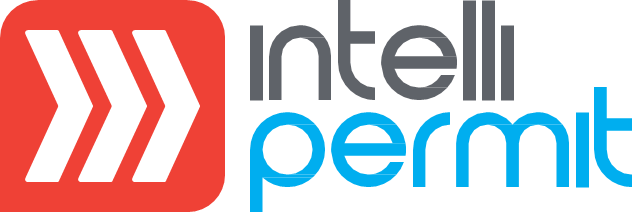By Gavin Halse
In industrial plants, identifying and controlling safety risk is vital to protect people working on hazardous jobs. Procedures like the job hazard analysis (JHA), job risk assessment (JRA) and permit to work (PTW) are well established and effective in this regard.
But in a typical mine or factory, things can suddenly change in ways that were not foreseen when the initial risk assessment was done. These changes can have significant safety implications. How can operations management foresee, detect and respond to fast changing safety risk in real-time?
Administrative controls
A JHA (job hazard analysis) will normally identify all the hazards and controls relating to work. The JHA is part of the planning process. It is the first step in ensuring that all hazards are properly identified. A JHA may be performed at the work site, or, around a table with experts in a plant office.
The permit-to-work (PTW) is then used to control the actual work. The PTW ensures that all hazards from the JHA and other sources are identified, all the necessary control measures are in place, and proper communication takes place between the people involved. The PTW also serves as a written “contract” between the people on the job in the field and plant operators who declare that the process conditions and equipment is safe for work to take place.
Changing hazards and real-time risk
Both the JHA and PTW are important administrative safety controls. But there is another dimension to risk that can easily be overlooked. “What happens if the risk suddenly changes”? Is it acceptable to rely on the JHA and PTW to be 100% accurate for the duration of the job?
A fast-changing risk might result from a sudden unforeseen change in process conditions, workers moving into an adjacent area, new people or equipment arriving at the worksite, etc. A simple change originating in the control room might for example energise equipment without isolations adjacent to workers in the field. If this change is not managed properly, the risk of an accident in the field can increase substantially.
In the real world, as anyone working in the industry knows, unexpected events and mistakes are inevitable. When these changes occur, the existing safety controls must be quickly adapted in real-time. But is this really practical? Any new hazard will likely require a new permit. The re-issue of a permit will involve multiple signatories and introduce delays, potentially prolonging the risk-exposure. These extraordinary remedial actions could also create new unforeseen risks and dependencies.
To avoid this, the PTW is usually limited to a few hours in duration. Some companies will also insist that a new permit be issued at every shift handover. The longer the permit is valid, the more important it is to monitor for and anticipate unforeseen risk.
It is far better to anticipate real-time risk when planning the job. When creating the permit it is, therefore, essential to consider not only the direct task-related hazards but also whether or not these could change suddenly and what would be the resulting impact. This requirement can be built into the JHA and permit procedures.
Having anticipated the possibility of real-time risk during the job, there is also a need to implement monitoring to ensure that safety controls remain appropriate for the entire duration of the job.
An example – hazardous gas leak
I once worked on an old Ammonia plant as an engineer in training. The plant had almost reached the end of its life, and there was always the possibility of a severe gas leak. Ammonia gas, being heavier than air, will sink, posing a real danger to anyone working downhill, in trenches, pits or underground servitudes. In this particular plant, ammonia gas was a familiar hazard and included on every permit to work.
In practice, however, the frequency of an ammonia gas leak was rare. Over time, people who routinely worked in these areas glossed over the Ammonia Gas hazard on the permit. With familiarity, vigilance dropped and control measures became ineffective.
However, if there was a leak, we knew the gas would quickly spread, and the consequences would be severe. If you were caught in a low lying location, it was possible that you would be overcome and asphyxiated before getting to a safe distance. The dynamics of an ammonia gas leak would be sudden and catastrophic.
The question is whether the existing JHA and PTW procedures were adequate to control work in this plant.
Real-time, changing risk
An Ammonia leak is perhaps an extreme example of a fast, changing risk profile. But real-time risks like this are typical, for instance, in oil and gas plants where a hydrocarbon gas leak could soon become a deadly explosive mix. The Ammonia example does, however, illustrate that when assessing safety risk, it is crucial also to consider the dynamics, i.e. how rapidly things could change during the job to suddenly threaten worker safety.
Several administrative controls can be implemented in the JHA and PTW system to anticipate and cater for real-time risk:
- Ensure the JHA is reviewed immediately before the work takes place rather than the day before. A JHA at the work site might also be more effective than a desktop exercise in an office, but the reverse could also be true. Classify the JHA procedure into different levels according to the inherent risk for each type of job.
- Ensure that the job hazard analysis technique considers the likelihood, consequences, and the speed of significant new hazards like gas leaks.
- Limit the permit duration to the shortest time necessary to complete the job safely.
- Consider avoiding issuing permits that will require handovers between work crews.
- Ensure there is real-time monitoring at the worksite — for example, using continuous gas analysis or connected worker monitoring.
- Ensure that it is possible to easily and quickly communicate new developments and warn all workers in the affected areas, for example, by using handheld radios, worksite supervision, mobile devices, and even evacuation sirens.
- Closely monitor all work in nearby areas. Work in an adjoining plant area should be flagged as early as possible, ideally during planning when the permit is initiated. Then appropriate supervision, monitoring and other safety precautions can be specified on the permit and implemented.
- Toolbox talks should highlight the possibility of a changing situation and what to do.
- Supervisors should also constantly check that the controls on the permit are adequate and relevant for the situation.
- For site hazards that are always present (such as ammonia or hydrocarbons), strictly enforce standard work procedures and standard PPE.
- Ensure that there is a mechanism to stop all work immediately when a new hazard, like a gas leak, is detected. At this point, all active permits should be immediately closed and only reissued when the danger has passed.
The role of integrated safety software
Integrated job hazard analysis, permit-to-work, and operational management software can help make the identification, prevention and control of real-time risk more manageable. Well-designed computer safety systems can also help speed up and more effectively co-ordinate the response.
IntelliPERMIT and OpSUITE, together, have several features that will be beneficial here:
- The ability to immediately suspend all active permits on the plant in an emergency or when any increased risk is detected.
- The ability to record and communicate observations and instructions between operators, maintenance technicians and other people involved in the plant’s ongoing activities to identify and flag changing risk profiles and ensure all active permits are considered.
- The ability to monitor, identify and proactively alert users when work occurs adjacent to the same area or on connected equipment.
- The ability to visually see an overview of all work to help identify potential conflicts into the future.
- Integrating real-time monitoring from DCS, PLC or connected worker platforms to the JHA and PTW system.
- Mobile applications that can provide connected workers with real-time information and abnormal condition alerts should there be a need.
What of the future?
The importance of safety technology is constantly evolving. Computers, unlike people, are excellent at routine, repetitive tasks without letting their guard down.
Fast-changing real-time hazards might soon be reliably predicted using artificial intelligence software connected to data from multiple software systems and plant sensors.
Taking advantage of these future developments will need a high level of automation and maturity in the operational safety processes (like the JHA and PTW). Companies considering digitising their manufacturing operations will benefit from having an established, integrated operational safety system that can monitor, detect and respond to real-time risks as well.
For more information
Adapt IT Manufacturing provides digital solutions that enhance safety performance and operational excellence to help industrial companies achieve more.
For more information on how to implement digital risk assessment solutions and permit to work, please get in touch with the team at Adapt IT Manufacturing.
More News and Articles
Q&A with IntelliPERMIT Consultant Lungelo Majozi
Explore the advantages of electronic permit to work (e-PTW) systems over paper methods, from faster investigations to specific hazard management. Learn how e-PTW enhances safety, prevents redundant isolations, and ensures accountability. Discover future trends like 3D modeling. IntelliPERMIT automates tasks, improves communication, and reduces costs, making workplaces safer and more efficient.
Powering Safety Innovations: An Exclusive Q&A with IntelliPERMIT Consultant Shirley Breytenbach
IntelliPERMIT transforms permit management with streamlined processes, competency-based approvals, and real-time visibility. Ensure regulatory compliance, enhance worker safety, and boost operational efficiency. The system offers seamless integration, empowering organisations to proactively mitigate safety risks.
Safety Software Implementation Success : An Exclusive Q&A with IntelliPERMIT Consultant Henry Boshoff
Unlock safety software success with IntelliPERMIT: Prioritise key features, secure user buy-in through change management, and foster collaboration. Set measurable goals, leverage incident data for proactive decisions, and ensure intuitive search capabilities. Streamline report generation and simplify scheduling and management of training, drills, toolbox talks, and audits. Overcome adoption challenges by addressing pain points and customizing the software. Enhance user adoption with automation and user-friendly interfaces. Evaluate safety software providers based on knowledge, experience, and adherence to standards—IntelliPERMIT excels. Easily integrate with existing systems through standard APIs. Opt for web-based software for accessibility and usability. IntelliPERMIT enhances safety practices and compliance.



